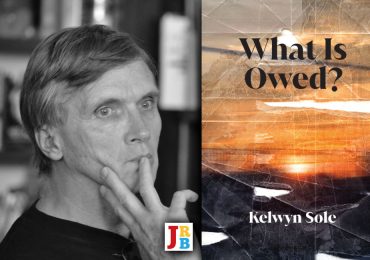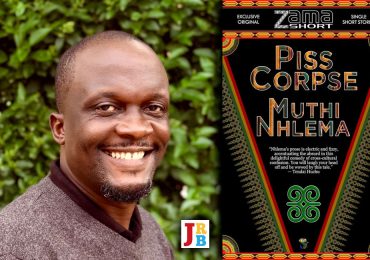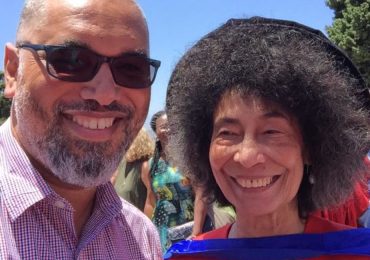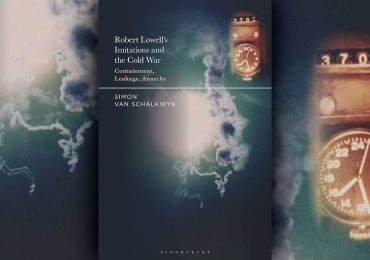The JRB presents an excerpt from Uhuru Portia Phalafala’s new book, Keorapetse Kgositsile and the Black Arts Movement.

Keorapetse Kgositsile and the Black Arts Movement
Uhuru Portia Phalafala
Wits University Press, 2024
Introduction: Elsewhere
African cultures and cosmologies can provide a wealth of inexhaustible resources for the project of epistemic decentring. Having exhausted technoscientific reason and confronted the civilizational consequences of its impasses, new metaphors are required for the future. We must heed the call for a renewal of the very sources of the imaginary and of a thought coming from an elsewhere.
Felwine Sarr, Afrotopia (2019: 80, my emphasis)1
When South African poet and statesman Keorapetse Kgositsile (1938–2018) was instructed by senior members of his party, the African National Congress (ANC), to flee the country into exile in 1961, he packed among his meagre belongings a corpus of Tswana literary classics. To him, they enshrined a set of valuables, of knowledge systems, aesthetic practices, cosmologies, and mythologies he could marshal to counter colonial modernity’s anti-Black warfare. As a revolutionary writer, he used the worlds from these classics as a basis to assert the existence of other forms of being, knowing, and belonging that were otherwise to the Eurocentric, racist, capitalist, and Christian social orders imposed by colonialism and apartheid. The Tswana literatures that accompanied him into exile were material representations of the values instilled in his formative years, used as bridges to connect politics of the homeplace with those of his unfolding exile travels and writing life.
He arrived with this treasure trove in the nascent cultural and political ferment of the Black Power and Black Arts Movements (BAM) in the United States of America in 1962. He harnessed that Tswana archive—comprising dramas, novels, and an anthology of poetry—in his five collections of poetry published in the States with the intent to foster continuities between the African American struggle and the struggles of Black South Africa. Further, he understood the Black experience as connected, thereby embracing Black world politics as fundamentally opposed to the culture of Jim Crow, colonialism, and apartheid. Operating in this world of Blackness he sought to bridge geographical and linguistic chasms, to foster political solidarities through cultural relations with Black diasporans.
His literary corpus published in the States, as well as his political activities, illustrate an assertion of the existence of otherworlds within the dominant paradigm of anti-Blackness. These are the worlds to which the elsewhere in this book refers. The availability of these worlds, their active materialization in his life and work, and his intentional access to them shaped his radical imagination. Further, he produced otherwise grammars and registers of possibility from those elsewheres in his poetry, concepts, and terminologies that point to ecologies of knowledge and being that he in turn deployed to dislodge and destabilize colonial modernity’s anti-Black social order. I borrow the ‘otherwise’ from Ashon Crawley, who defines it as ‘a word that names plurality as its core operation, otherwise bespeaks the ongoingness of possibility, of things existing other than what is given, what is known, what is grasped’ (2016: 24). This book reveals those pluralities, the multiple worlds from which he constructs and coins his poetics of possibility.
The availability and surfacing of otherwise registers by Kgositsile branded his aesthetics and politics with a particular tenor that was deeply yearned for by his African American contemporaries. The worlds he shuttled in his suitcase couched revolutionary potential to diasporans who faced the loss of those worlds due to the Middle Passage, genealogical deracination, and the passage of time. They were negotiating their shifting group and individual identities, collectively, from ‘negro’ to Black, and individually adopted African names to repudiate their ‘slave names’, reflect their heritage, and reclaim institutionally decimated ties to the continent. They intuited the potential radical dimensions of other universals, modernities, and social orderings from the African continent, and Kgositsile’s work revealed and confirmed their inclinations. His work became exemplary and was emulated.
There are causal relationships between Kgositsile’s decision to carry these classics across the border and pivotal lessons learnt in the domestic environment of his younger years. He grew up in rural Dithakong with his grandmother Madikeledi, who banned the English language in her home while simultaneously expecting young Kgositsile to receive a good report, that is, to attain first-class results at his British colonial primary school. In insisting upon seemingly contradicting values, Madikeledi initiated the co-existence of two world systems in young Kgositsile’s life, where the one world constituted foundational culture that embedded Tswana customs, cosmologies, and a sense of community, and the other world carried foreign value systems. Not only did the latter carry colonial culture, but it also occasioned a violent imposition of that culture onto local cultural worlds for purposes of assimilation. Madikeledi was conscious of this, and Kgositsile would later understand her stance to be political.
Madikeledi’s attitude demonstrated crucial positions to young Kgositsile: she grounded his cultural and political sensibilities in Tswana culture, customs, cosmologies, and a sense of community, while also equipping him with the confidence to engage and steep himself in encountered cultures, as long as they were not coercively imposed. In this dynamic, along his life journey, he would not fall into the trap of seeking to preserve or glorify the purity or harmony of his first culture. She instilled critical comprehension of home and community cultures of Setswana as dynamics of modernity, not its antithesis. That is, she instilled a view of Tswana culture as durable, malleable, fluid, porous, and relational as opposed to rigid, fixed, and ossifying. This is crucial as it underwrites Kgositsile’s assertion of continuities in his poetics between Tswana worlds and Black world politics, where the former operates in dynamic ways to shape and expand the politics of the latter. The two worlds became mutually reinforcing—with African American contexts also enriching Tswana knowledge—and cooperative in articulating a geographically unique radical tradition fashioned from a coeval elsewhere.
Madikeledi’s political and cultural position crucially groomed Kgositsile’s gravitation towards alignment with the mass liberation movement in South Africa, to join and participate in the public operations of the ANC and the South African Communist Party. In his understanding, her views on colonial culture and her need to anchor him in the otherworld of Setswana were coterminous with the views of the national liberation movement, an organized political expression of a cultural alternative to colonial culture. Hence Madikeledi represented the isolated sum of the organized whole, those who shaped and informed the desires and aspirations of the liberation movement. His peregrinations threw into sharp relief her struggle as tied to those of the masses.
In raising the value of home culture as first culture while not undervaluing or rejecting the English language and culture of his schooling system, Madikeledi seeded in young Kgositsile the confidence, adaptability, and dexterity to navigate two worlds and two knowledge systems from a young age. She eschewed their positioning as dichotomous and binary, thus flowering an interweaving practice that characterizes Kgositsile’s oeuvre. His work gathers and conjugates home culture with Black world culture, Southern African oral/aural traditions and literary cultures with those of African America, and Southern African liberation politics with the radical traditions of the Black world. Stephen Henderson writes of him: ‘Willie [Kgositsile] speaks from Black Africa to Black America; from Black America to Black Africa. He is of both worlds but not divided. There is a powerful harmony within him, a universal Blackness’ (1969: 118). His work holds together these two seemingly disparate worlds, bringing them into relation without privileging one over the other. I call this bridging and interweaving practice gathering work, a poetic of suture which I consider to be a matrilineally inherited heirloom.
The authors of Revolutionary Mothering, Pauline Gumbs, China Martens, and Mai’a Williams, define radical mothering as ‘the imperative to build bridges that allow us to relate across […] very real barriers’ (2016: 41). I regard this gathering work by Madikeledi as a deployment of Black motherhood towards political ends, used to impact futurity by seeding the desires for a liberated South Africa. She constructed what bell hooks (1990) calls the ‘homeplace as site of resistance’. Madikeledi’s radical mothering equipped Kgositsile with the tools that would later inform his rebellion, and I consider this bridge-building work a world-making enterprise. I take as foundational her home- and community-making practices, consisting of her deliberate diffusion and targeted transmission of intergenerational, ancestral, and lineage wisdoms and cosmologies, and interrogate Kgositsile’s witnessing of her acts as transgressive and political. I take seriously his harnessing of that living repository of knowledge and his imbrication of homeplace politics with the mass liberation movement in South Africa and in the Black world. The actively materializing archive of his formative years becomes the oral/aural worlds that converge in Kgositsile’s work, and I read Madikeledi’s politics of the homeplace as world-constituting forces, radical in so far as the boundaries of the Tswana cultural universe seeded in the home reshape a larger world than the local or national community and culture.
His mother, Galekgobe, whom Kgositsile joined in Johannesburg after Madikeledi’s passing, continued the teachings of the elderly matriarch, imparting another crucial lesson unto young Kgositsile. These two women are the matrilineal force to which Kgositsile attributes his political and cultural sensibilities. Asked by Callaloo’s Charles Rowell, in 1973, to talk about some of his early experiences that had an impact on his writing, Kgositsile responded: ‘I would say that my earliest memories go back to two very strong women—my grandmother and my mother—in that order. Practically everything I write is tied up with some kind of wisdom I got from them in that hostile environment’ (1978: 23).2 When I interviewed Kgositsile in 2013, I asked him a similar question, to begin our dialogue with a discussion of his formative years, to trace the proverbial portrait of an artist as a young man, and he gave me the same answer. This tasked me to treat his assertion and affirmation very seriously and with great care, hearing him remain faithful, as he did, to this truth he told in 1973 and again forty years later. I began to pay closer attention to his poetry, short stories, interviews, and essays in order to read, hear, and sense where these women are mentioned, sounded, and referenced.
To illustrate my point on the gathering practice of Kgositsile’s work, the bridging of Black America and Black South Africa, I resound his assertion and affirmation of matrilineal influences in his work by focusing on his involvement in the Black Arts Movement. Later in their conversation, Rowell asks Kgositsile to name fellow contemporary African American writers that influence his work, to which Kgositsile answers: Amiri Baraka. Rowell pushes, ‘specifically, how did he influence you?’—both important questions as the topic of influence is central to this book. Kgositsile offers:
[…] in terms of thinking, not style, but thinking; in terms of realizing more and more, although I did already, that writing had to be directly connected to actual life. I would say the impact of someone like Baraka made or fertilized the ground, say in my mind, to be receptive immediately to people like Malcolm, Fanon, and others. What that did, too—which is interesting, because it might not have happened if I had not come here—was to open up in me memories of earlier wisdom during my young years in South Africa. Weirdly enough, I recalled a lot of things I had read in Tswana and Sotho literature which, later, I think, informed the music or the rhythm in my work (1978: 30, my emphasis).
In his response, Kgositsile traces and surfaces numerous aesthetic and political influences in his work. He emphasizes that Baraka—a figurehead of the Black Arts Movement—reinforced the importance of what he was already doing: connecting his writing to real life. But the impact the years in Black America had on him in relation to South Africa, signalled in ‘it might not have happened if I had not come here’, is the revelation of the role the matriarchive has had in his life and work. The reinforcement by Baraka tilled the grounds of his mind to trace the sprouting political philosophies of Malcolm X and Frantz Fanon to the same seedbed as the wisdoms and teachings from his youth. Part of this golden thread that ties together the homeplace and Black world politics are the Sotho and Tswana literatures that resounded the oralities and auralities of his homeplace, modelling for him the scriptural transcription of those worlds in printed literature. There is a throughline between the matriarchal knowledge systems of his formative years, indigenous languages literatures, the Black Arts Movement, and Black world politics, not in any linear form but all interwoven and intertwined to produce his poetic and political expression. To be clear, an understanding of Kgositsile’s relation with Black America is also an understanding of his relationship with his grandmother and mother in South Africa.
Keorapetse Kgositsile & the Black Arts Movement contributes to scholarship the concept of the matriarchive. The matriarchive is a living repository of sound knowledges transmitted by matrilineal members of the family. These knowledges are rooted/routed in cosmologies and mythologies of the lineages and are at once intergenerational, communal, relational, and ancestral. They enshrine indigenous languages, names, songs, prayers, and rituals practised in the homeplace and actively materialize in their progenies’ lives and ongoing becoming. In his work, Kgositsile draws from the matriarchive to assert different origins and beginnings beyond the inauguration of colonial history, to proclaim alternative creators to the patriarchal Christian Holy Trinity, to assert the existence of another world whose cultural universe enables him to repudiate a Black subjectivity based on the Black Other. The matriarchive offers him a knowing of oneself fashioned not through negation and difference but ontological affirmation and belonging. The matriarchive informs his acts of disobedience to the ruling order, to speak from an elsewhere that generates other forms of being, knowing, and relating in the world. The matriarchive teaches him to be suspicious of the myth of pioneering individualism, of the singular genius, and of structures of relations shaped by domination and coercion. The matriarchive enables him to navigate his worlds of first comprehension and the colonial cultural universe, granting him confidence to sing to new gods and make new languages, to (inter)weave possibility out of alienation and disenchantment through philo-praxis of interrelation, collaboration, and solidarity. His work being ‘connected to actual life’ produces theory from collective practice: poetics of possibility.
~~~
1 Since I began thinking about other cosmologies as potentially opening otherworlds, Felwine Sarr’s quotation from Afrotopia (2019) offered me the notion of ‘elsewhere’ as theoretically generative. This idea has since grown in my mind and spirit through engaging with jazz musician and scholar Nduduzo Makhathini’s own use of the term in his recent jazz shows, notably at his three-day ritual performance, ‘Jazz & Vines’, in March 2022, where, on the last day, I was in conversation with him.
2 Although this interview was published in 1978, it is recorded to have taken place in 1973.
~~~
- Uhuru Portia Phalafala is a senior lecturer in the English department at Stellenbosch University, author of Mine Mine Mine (a poetry collection) and co-editor of Keorapetse Kgositsile: Collected Poems 1969–2018.
~~~
Publisher information
The cultural configurations of the Black Atlantic cannot be fully understood without recognising the significant presence of writers and artists from the African continent itself. Among the most influential was South African poet laureate Keorapetse Kgositsile, or Bra Willie, as he was affectionately known. Yet, until now, there has been no full-length study of his work.
Uhuru Portia Phalafala’s wide-ranging book reveals the foundational influence of Kgositsile’s mother and grandmother on his craft and unveils the importance of Tswana oral and aural traditions, indigenous knowledge systems, and cosmologies he carried with him into and after exile. The book illuminates a southern African modernity that was strongly gendered and expressed robust anti-imperialist, anti-colonial, anti-apartheid, and civil rights struggles. Using the original concept of ‘elsewhere’, the author maps the sources of Kgositsile’s transformative verse, which in turn generated
a ‘poetics of possibility’ for his contemporaries in the Black Arts and Black Power Movements, and beyond—among them Maya Angelou, Larry Neal, Gwendolyn Brooks, Tom Dent, members of The Last Poets, Otabenga Jones & Associates and rapper Earl Sweatshirt—who all looked to his work to model their identities, cultural movements and radical traditions.
This study on writer and activist Keorapetse Kgositsile presents a new approach to studying the radicalism of Africa and its diaspora, and makes a major contribution to the histories of Black lives, gender studies, jazz studies, politics and creativity.





